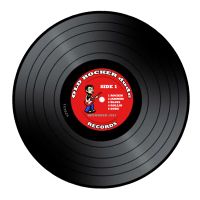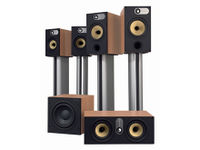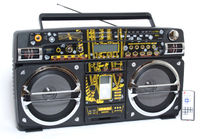Stereotype
Stereotypes or Stereophonic typecasting (Gr. Stereos = solid + phone = sound) is the skill of recognising different brands of sound system, and their individual attributes. It originally started in the late 1950's with the advent of Rock and Roll, and has progressed steadily with the advent of newer and better technology to a point where it is now a highly specialised field.
History of stereotyping
World War II and population decline
The second world war brought forth many advances in sound and radio technology as the need for information transfer to be fast, efficient and reliable became more essential. After the war, the world breathed a sigh of relief that it was over, and the production of Baby Boomers began.
With the need to repopulate and produce more offspring ever-present in peoples minds, the need for music to procreate too became more urgent. Musicians rose to the challenge, and produced a new type of music that has now come to be known as rock and roll, however they were consistently let down in their efforts, when sound systems of the day were constantly defeated by static, power issues, and stray radio signals.
It was fait accompli then, that technology recently employed in the wholesale destruction of life, would now be used in the creation of new life.
Part of this new music was the introduction of multi-channel recording and playback, most notably having a left and right channel. So in 1953, Remington records started recording with multiple channels, releasing the first stereophonic phonograph discs to public in 1958. Music was now commonly being played through both left and right channels at the same time, and Stereo was born.
Stereophonic typecasting
Of course, as with any major social change brought on by innovation, this caused its own plethora of issues. With so many new brands, makes and models of sound equipment on the market, which was the best one? Some people preferred more bass notes, while others preferred the higher trilling sounds. And while one stereo system would have its strength in its magnification of sound, another would be more sensitive to the nuances of sound by having more sensitive needles.
Thus sales people and music and love making aficionados started to catalogue and attach types to different sound systems. In April 1961, the US FCC licensed stereophonic broadcasting, bringing in a new dimension of technical expertise.
Beginner's guide to stereotypes
As stereotyping is a highly specific field, it is difficult to give a detailed description of all stereotypes in this brief space. However some of the more popular stereotypes are detailed below.
|
Bowers & Wilkins 685 Speakers Bowers & Wilkins (often abbreviated to B&W) is a very British company, whot, whot! Started in 1966, B&W is known for its very proper way to approach sound. For a significant period, B&W led the world, and was at that stage referred to as the B&W Empire. However those glory days are long behind. B&W are well suited for quiet, reserved sounds, and the ability to remain resilient and stable even under the most tortuous of conditions. B&W speakers are generally best used for listening to the cricket while having a nice cup of tea. |
Lasonic i931 iPod Dock Ghetto Blaster Yo! Lasonic Ghetto Blasters are popular amongst those who like to make a lot of noise with what little they have. Although expensive, they can be made quite affordable by missing car payments, skipping out on child support, and abusing the welfare system. They have a very bassy sound, and come in a variety of colours, which are all different shades of black. They do have a lot of extra accessories and flashing lights that have no true purpose, however this 'bling' is an integral part of the Lasonic style. These are well suited for gangsta rap, but unfortunately not much else. |
|
Outlaw Audio RR2150 Stereo Receiver Yeehaw and God Bless Outlaw Audio, proudly American owned and made.[1] The RR2150 Stereo Receiver is known predominantly for what is often referred to as its 'fat' sound, which is created by drawing in significantly more fuel than most other receivers. Outlaw Audio advertises that they have control over the rest of the market. It is fairly easy to identify the speaker stands by sight, as they tend to have red flanges on their neck. Although using up a significantly large amount of audio resources, Outlaw Audio are predominantly used for both kinds of music: Country and Western. |
Teufel Omniton 202 Achtung baby! Teufel is a German manufacturer of stereos, and is renowned for its precise, disciplined sound. They are an industrious set of speakers, however there has been some issues with them when coupled with other brands. By design, they are intended to be the master system but this has resulted in the plugs and outlets being incompatible with other designs, often leading to unsyncopated, warring sounds, and although they tend to start off strong in these cases, they quickly weaken and surrender. They are generally okay if you don't mention this war.[2] Teufel are well known for their ability to accurately represent the inherent supremacy of Kraftwerk and Wagner. |
|
Yamaha RX-397 Stereo receiver Ah soooo, Yamaha was established as the Japan Musical Instrument Manufacturing Co. (Japanese: 日本楽器製造株式会社 Nippon Gakki Seizō Kabushiki Gaisha) in 1887, which shows a certain lack of creativity, but extremely pragmatic at the same time. While smaller than most of its competitors, the RX-397 is known for its robotic qualities, and extraordinary capacity to work for extremely long periods in return for just a small bowl of rice. Considered dull on the surface, the RX-397 has hidden, some even say perverse, depths. | |
Footnotes
See Also








